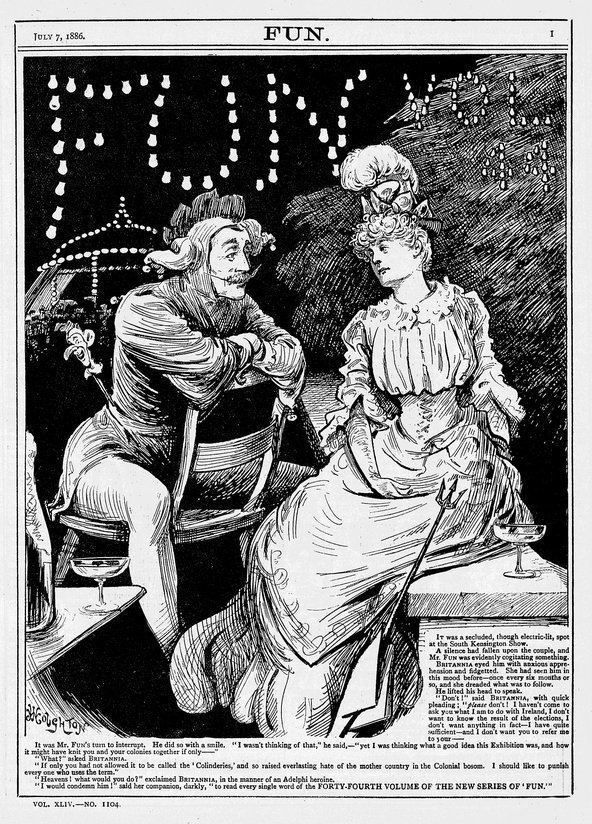 | ||
Fun was a Victorian weekly magazine, first published on 21 September 1861. The magazine was founded by the actor and playwright H. J. Byron in competition with Punch magazine.
Contents
Description
Like Punch, the journal published satiric verse and parodies, as well as political and literary criticism, sports and travel information. These were often illustrated or accompanied by topical cartoons (often of a political nature). The Punch mascot, Mr. Punch and his dog Toby were lampooned by Fun's jester, Mr. Fun, and his cat. The magazine was aimed at a well-educated readership interested in politics, literature, and theatre.
Fun was sold for a penny and was sometimes characterised as a 'poor man's Punch'. Thackeray called it "Funch". Fun silenced its critics by publishing lively fare, whereas Punch was criticised as dull and tired. One area in which Fun clearly bested its rival was in its close connection to popular theatre.
Byron and his successor as editor, Tom Hood, the son of the first Punch contributor, assembled a vivacious, bohemian and progressive staff. Notable contributors included playwrights Tom Robertson, Hood, Clement Scott, F. C. Burnand (who defected to Punch in 1862), satirist Ambrose Bierce, G. R. Sims and especially W. S. Gilbert, whose Bab Ballads were almost all published in its pages, among other articles, poems, illustrations and drama criticism over a ten-year period. Cartoonists included Arthur Boyd Houghton, Matt Morgan and James Francis Sullivan (1852–1936). The Fun gang frequented the Arundel Club, the Savage Club, and especially Evans's café, where they had a table in competition with the Punch 'Round table'. Even though Fun was seen as liberal in comparison with the increasingly conservative Punch, it could cast satirical scorn or praise on either side of the political spectrum. For instance, Disraeli, whose unorthodox character and ethnic lineage made him a popular focus of attack, was praised in the magazine, including for his Reform Bill of 1867.
History
Byron ceded the editorship of the paper to Hood in 1865 and sold Fun to engravers and publishers George and Edward Dalziel in 1870, who had previously engraved drawings for Punch. Two years later they transferred it to their nephew Gilbert Dalziel (1853–1930). After the death of Hood and the end of contributions from Gilbert by 1874, the quality of the content began a slow decline. During the 1870s, the circulation of Fun is estimated at 20,000, compared to Punch's 40,000. Hood was succeeded as editor by Henry Sampson until 1878, and then the editorship devolved to Charles Dalziel. In 1893, the Dalziels withdrew from the journal.
Fun ceased publication in 1901, when it was absorbed into Sketchy Bits.
